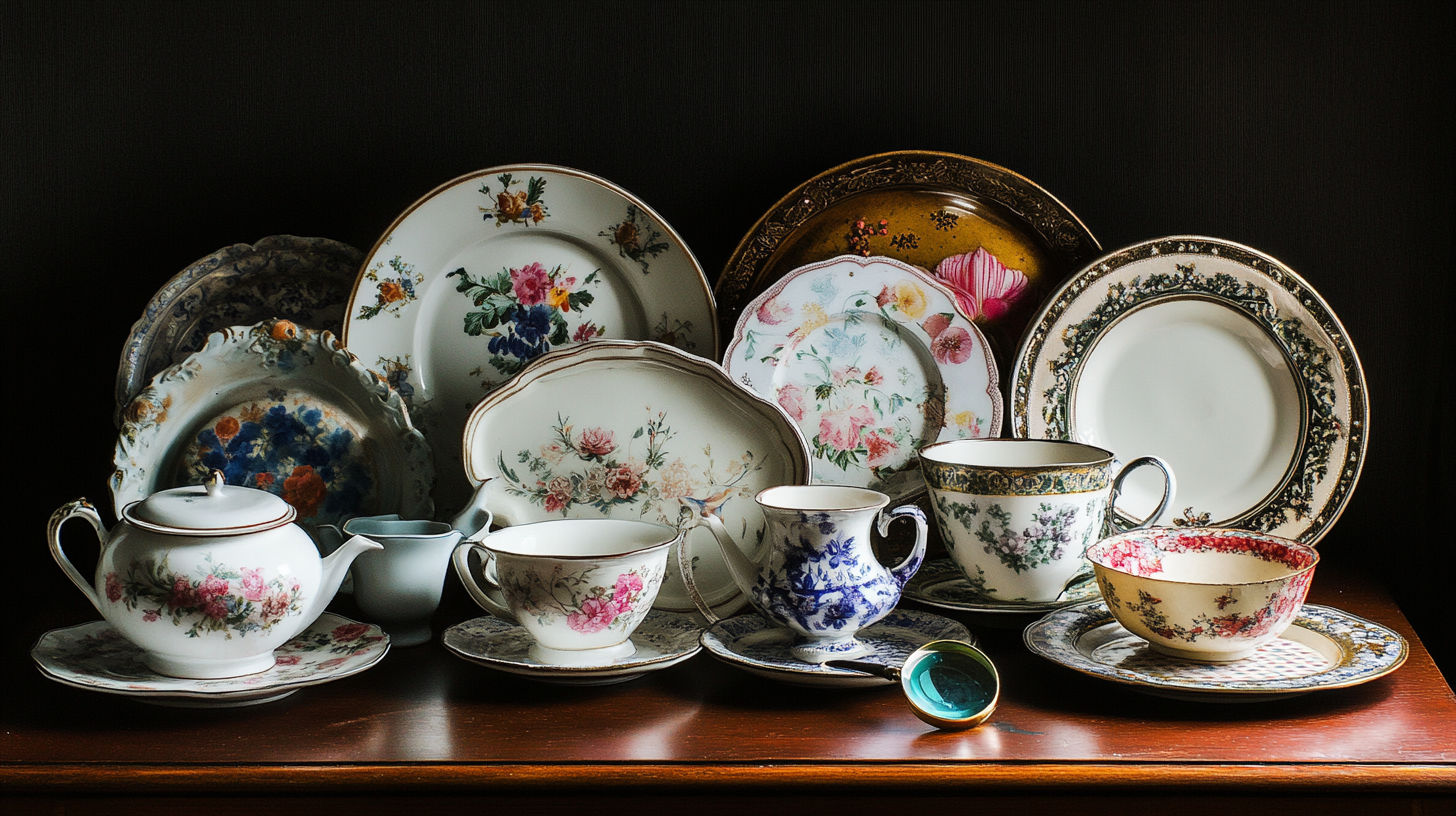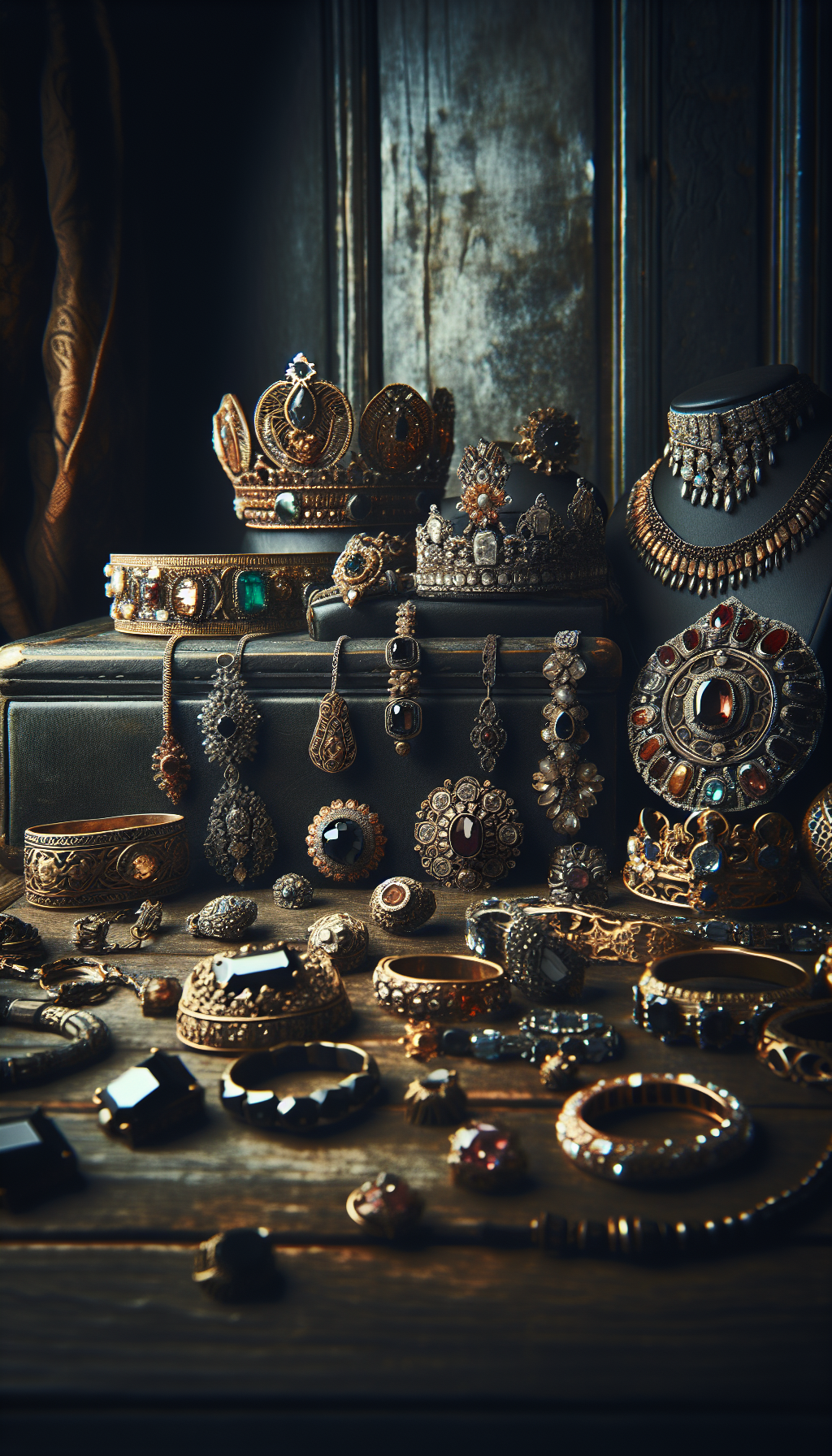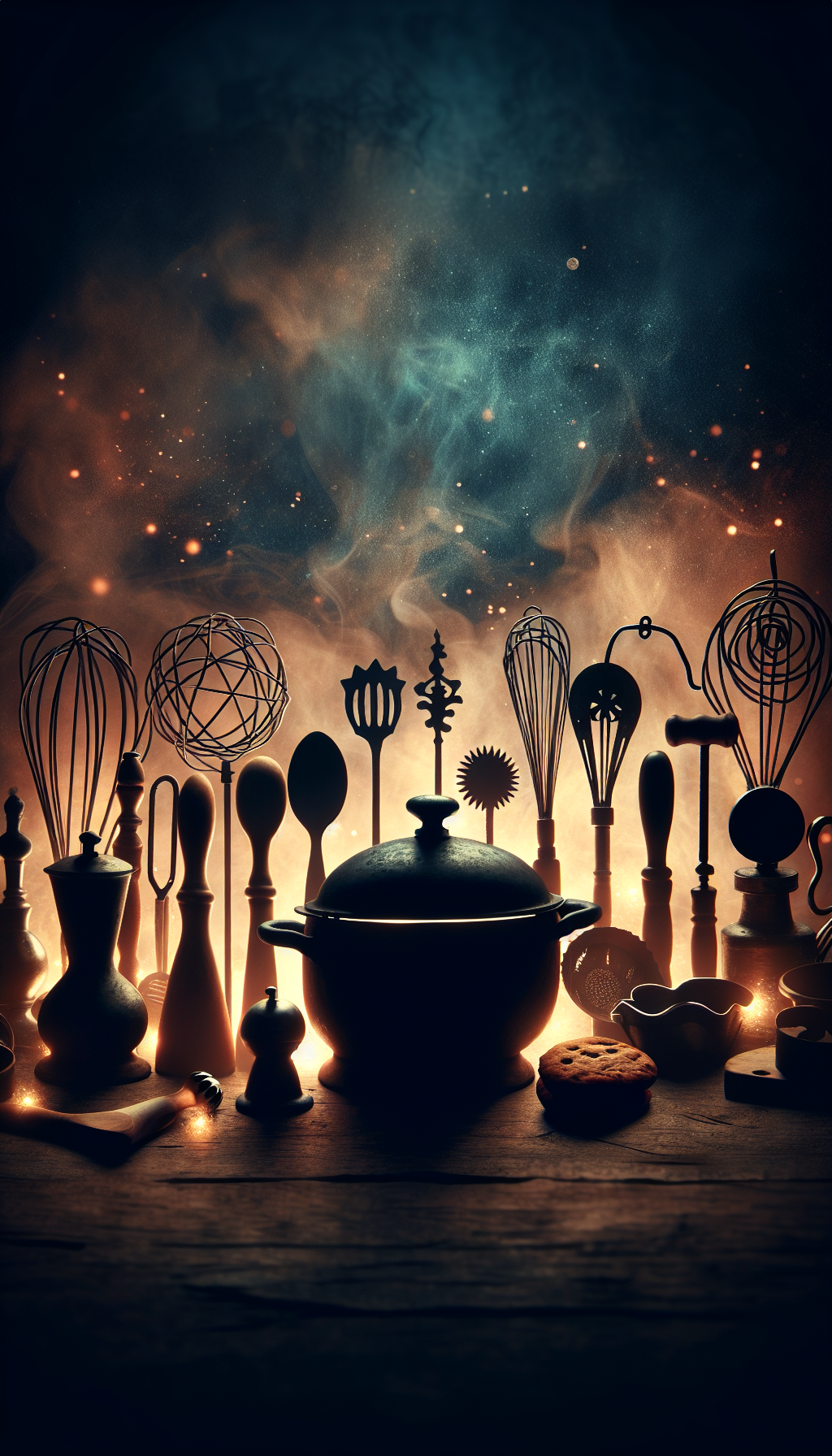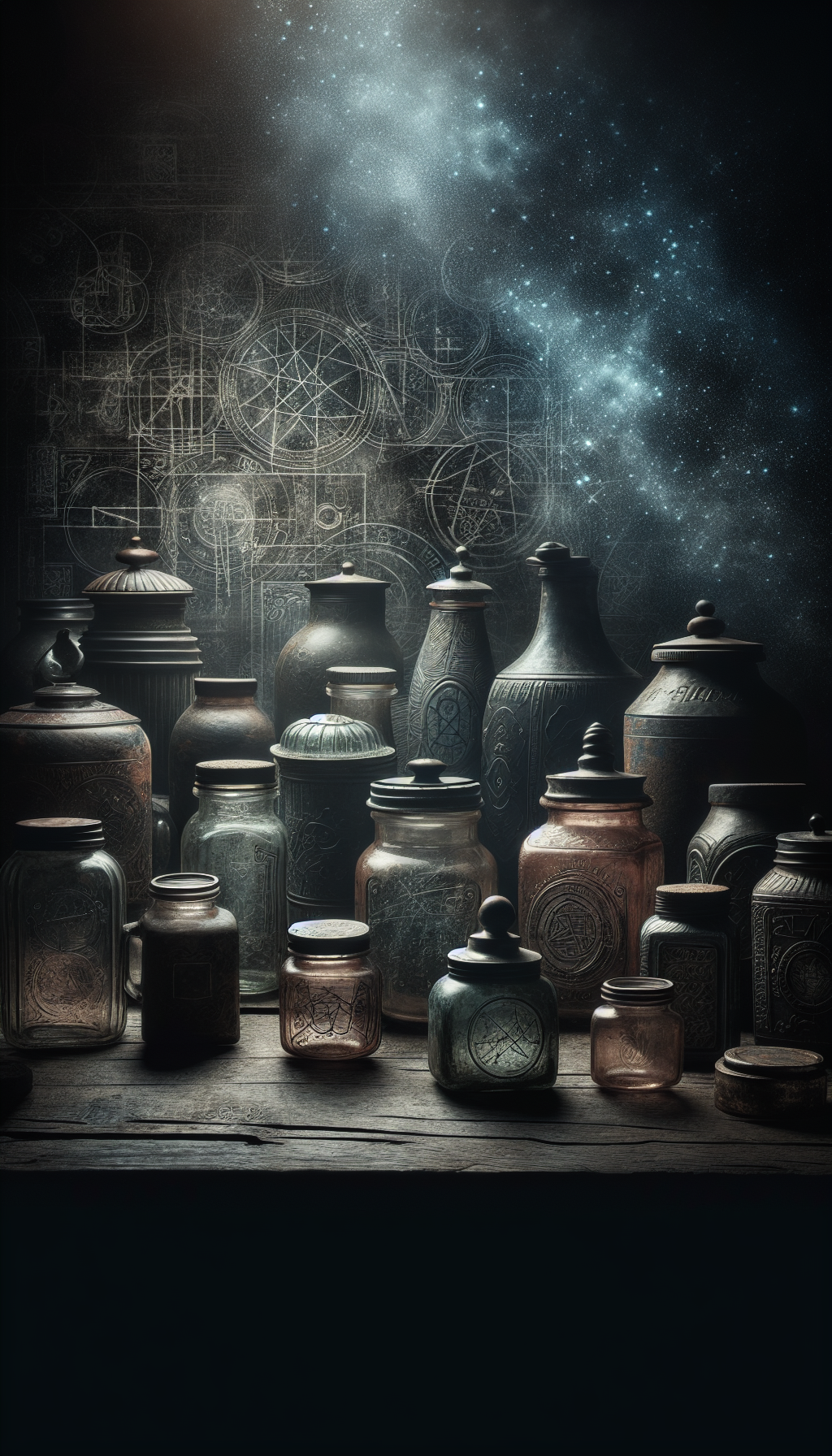Introduction to Antique Dish Values
In this comprehensive guide, we’ll explore what makes antique dishes valuable, showcase some of the world’s most expensive examples, provide price ranges for popular patterns, and share expert tips for identifying potentially valuable pieces in your collection. With the right information, you might discover that the old china in your cabinet is worth far more than you realized.
Antique Dish Market Highlights
Most Valuable Antique Dishes in History
Record-Breaking Antique Dish Sales
Exceptional pieces that have made auction history
</tbody>
</table>
While these museum-quality pieces represent the extreme high end of the market, they illustrate why understanding antique dish values is important. The combination of imperial provenance, extreme rarity, and exceptional craftsmanship propelled these pieces to their record-breaking prices.
As Museum of Fine Arts Boston curator Nancy Berliner explains, “These imperial Chinese ceramics represent the absolute pinnacle of technical achievement and artistic expression in their time, which is why they command such extraordinary prices today.”
Identifying Valuable Antique Dish Patterns
Evolution of Valuable Dish Patterns
- 1700s
Early European Porcelain
Meissen, Sèvres, and Worcester led European porcelain production. Hand-painted scenes, floral designs, and gilt detailing characterized these valuable early patterns. - 1800s
Transfer-Printed Wares
Blue and white transferware patterns like Spode's "Blue Italian" and Wedgwood's "Willow" pattern gained popularity and remain highly collectible today. - Late 1800s
Art Nouveau & Victorian Styles
Ornate floral designs, gold accents, and elaborate borders characterized dishes from this period, with Limoges and Haviland producing particularly sought-after examples. - Early 1900s
Art Deco & Modernist Designs
Bold geometric patterns and stylized motifs from companies like Clarice Cliff and Susie Cooper now command premium prices. - Mid-Century
Mid-Century Modern Designs
Colorful patterns from companies like Fiestaware, Pyrex, and Russel Wright attract strong collector interest with rising values.
Valuable Chinese and Asian Porcelain Patterns
Chinese porcelain has a history spanning over 2,000 years, with certain patterns and periods being especially valuable:
- Blue and White Porcelain: Cobalt blue designs on white porcelain have been produced since the Yuan Dynasty (1279-1368). Ming Dynasty examples are particularly sought after.
- Famille Rose: Pink-dominant palette developed during the Kangxi period (1662-1722), featuring detailed floral and figurative scenes.
- Famille Verte: Green-dominant palette popular during the Kangxi period.
- Celadon: Distinctive jade-green glazed wares dating back to the Song Dynasty.
- Imari: Japanese porcelain with underglaze blue and overglaze red and gold decoration.
Valuable European Dish Patterns
European manufacturers have produced countless patterns, with these being among the most valuable:
- Meissen “Onion Pattern”: Blue and white design inspired by Chinese motifs, dating to the early 18th century.
- Sèvres Pink Ground: Pieces with the distinctive “rose Pompadour” pink ground color command premium prices.
- Royal Copenhagen “Flora Danica”: Detailed botanical illustrations on white porcelain, still produced but antique examples are highly valuable.
- Wedgwood Fairyland Lustre: Designed by Daisy Makeig-Jones in the 1920s, featuring fantastical scenes with a lustrous finish.
- Spode “Indian Tree”: Introduced in 1816, featuring an exotic tree with flowers and fruit in rich colors.
According to ceramics expert Judith Miller, “The most valuable patterns combine aesthetic appeal, technical excellence, and historical significance—especially those from factories with long-standing reputations for quality.”
How to Identify Valuable Antique Dishes
Antique Dish Identification Checklist
Key elements to check when identifying your antique dishes
- Look for backstamps or maker's marks
- Note the pattern name if visible
- Examine the quality of decoration and materials
- Check for handpainted vs. transfer printing
- Consider the weight and translucency
- Look for gold or platinum edging
- Search for any damage or repairs
- Note any unusual shapes or forms
Reading Backstamps and Maker’s Marks
The backstamp or maker’s mark on the underside of a dish is often your best clue to its origin, age, and value. Here’s what to look for:
- Factory Name: Many pieces are marked with the manufacturer’s name (Wedgwood, Spode, Limoges, etc.)
- Country of Origin: “Made in” marks can help date pieces. For example, “Made in Occupied Japan” indicates 1945-1952.
- Pattern Name or Number: Some backstamps include the pattern name or a pattern number.
- Special Marks: Look for royal warrants, exhibition marks, or artist signatures which can add value.
- Date Codes: Some manufacturers used special symbols or letters to indicate production year.
According to the Ceramic Research Foundation, “Marks can change over time, even within the same company, giving useful clues to a piece’s age. Registry numbers, when present, can be precisely dated.”
Distinguishing Bone China, Porcelain, and Earthenware
The material composition of your dishes affects both identification and value:
- Bone China: Contains bone ash, giving it a distinctive creamy white color and translucency. Hold it up to light—you should be able to see shadows through it.
- Porcelain: Completely vitrified (glass-like) material that produces a clear ring when tapped. Often thinner than other ceramics.
- Earthenware: Heavier, more opaque, and often cheaper than porcelain. Generally produces a dull sound when tapped.
- Ironstone: Durable, thick white earthenware developed in the 19th century as an alternative to porcelain.
Spotting Valuable Decorative Techniques
How a dish is decorated can significantly impact its value:
- Hand-Painted Details: Look for slight variations and brushstrokes indicating hand decoration rather than mechanical printing.
- Gilding/Gold Work: Real gold decoration feels slightly raised and won’t rub off easily. It often appears more bronze-colored than bright yellow.
- Transfer Printing: Earlier transfer-printed pieces (pre-1830s) often show tiny imperfections and slight smudging.
- Lithophanes: Translucent porcelain with molded designs visible when held to light.
- Moriage: Raised enamel decoration, often found on Japanese Satsuma ware.
As Pender & Peony’s plate identification guide explains, “The quality of decoration is often more important than age in determining value. Finely detailed hand-painting will always command premium prices over mass-produced transfer prints.”
Antique Dish Value Factors
Condition Impact on Value
Condition is perhaps the single most critical factor affecting antique dish values:
- Mint Condition: No damage, no repairs, original glaze intact. Commands highest prices.
- Excellent Condition: Very minor wear but no chips, cracks, or repairs.
- Good Condition: Shows some age-appropriate wear but no significant damage.
- Fair/Poor Condition: Notable chips, cracks, repairs, or crazing (fine cracklines in the glaze).
According to Money Talks News, “A single hairline crack can reduce value by 50% or more, while professional repairs may preserve some value but still significantly impact price.”
Rarity and Production Numbers
The scarcity of a piece dramatically affects its value:
- Limited Production Runs: Pieces made in small quantities or for a short period.
- Experimental Pieces: Test patterns or colors that never went into full production.
- Discontinued Patterns: Early examples of patterns that were later discontinued.
- Special Commissions: Custom-ordered pieces for notable clients or events.
Provenance and History
The documented history of ownership can significantly enhance value:
- Royal or Noble Ownership: Dishes owned by royalty or aristocracy.
- Famous Collections: Pieces from well-known collectors or museums.
- Historical Significance: Dishes used at notable events or with historical connections.
- Documentation: Original receipts, certificates, or auction records add value.
Set Completeness
Complete sets generally command higher prices than individual pieces:
- Full Dinner Services: Complete matched sets for 8, 12, or more place settings.
- Rare Serving Pieces: Unusual items like fish sets, punch bowls, or tureens.
- Complementary Pieces: Tea/coffee services that match dinner sets.
As noted by Cynthia Findlay Antiques, “Complete sets in perfect condition can command 20-30% premium over the calculated value of individual pieces.”
Value Impact Factors for Antique Dishes
How various factors affect market prices
| Category | Price | Notes |
|---|---|---|
| Wucai Fish Jar and Cover (Ming Dynasty) | $27 million | Rare imperial Chinese porcelain with vivid polychrome decoration |
| Qing Dynasty Falangcai Bowl | $25 million | Rare enamel bowl from Emperor Kangxi period with imperial markings |
| Blue and White Dragon Jar (Yuan Dynasty) | $21.6 million | 14th-century porcelain with intricate cobalt blue dragon motif |
| Ru Guanyao Brush Washer | $37.7 million | Extremely rare Northern Song Dynasty ceramic with distinctive glaze |
| Meiyintang Chenghua "Chicken Cup" | $36 million | Small Ming Dynasty cup with chicken design, one of only 17 known examples |
</tbody>
</table>
Valuable Vintage Dish Brands Worth Money
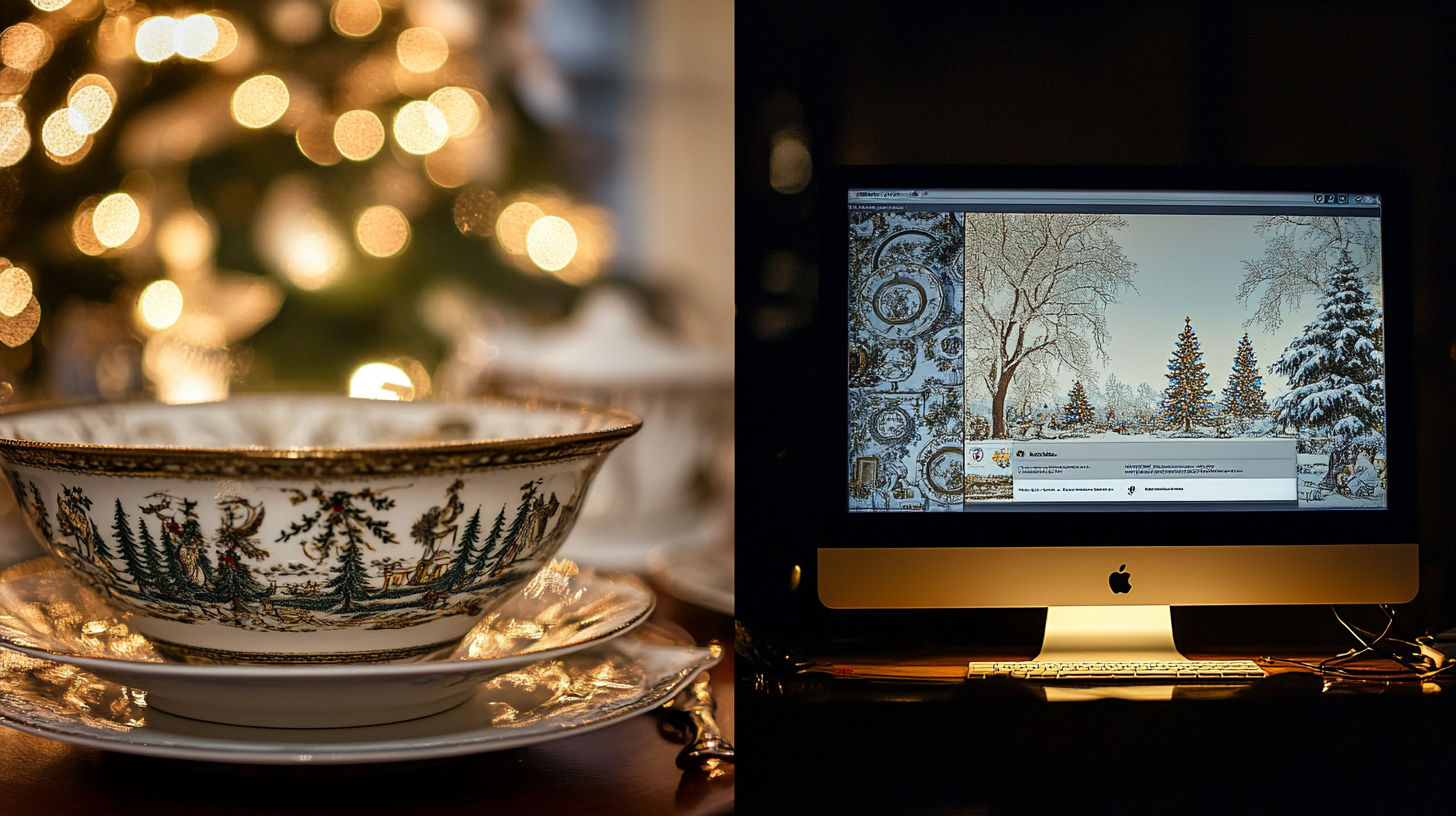
Fine China and Porcelain Brands
These high-end manufacturers are known for exceptional quality and craftsmanship:
- Meissen: Germany’s oldest porcelain manufacturer (est. 1710). Early pieces with crossed swords mark can be worth thousands.
- Sèvres: French royal porcelain factory known for vibrant colors and gilding. 18th-century pieces are especially valuable.
- Minton: British manufacturer known for elaborate designs and superior quality. Their pâte-sur-pâte decoration commands premium prices.
- Royal Copenhagen: Danish company renowned for their hand-painted blue and white designs, especially Flora Danica pattern.
- Wedgwood: Historic English pottery known for jasperware, Queen’s Ware, and Fine Bone China. Fairyland Lustre pieces by Daisy Makeig-Jones can sell for $5,000-$20,000.
- Limoges: French porcelain known for exceptional quality. Hand-painted examples with artist signatures command highest prices.
- Rosenthal: German manufacturer known for collaborations with artists and designers like Salvador Dalí and Versace.
Mid-Century Modern Collectibles
These more recent brands have seen significant value increases in recent years:
- Fiestaware: Colorful American dinnerware introduced in 1936. Original “radioactive red” pieces (containing uranium oxide) are especially valuable.
- Pyrex: Vintage patterned Pyrex from the 1950s-1970s has skyrocketed in value. As LoveToKnow reports, individual casserole dishes can sell for around $1,000.
- Russel Wright: American designer known for “American Modern” dinnerware in organic shapes and soft colors.
- Franciscan Starburst: Iconic atomic age pattern from the 1950s with distinctive starburst motif.
- Blue Ridge Southern Pottery: Hand-painted pottery produced between 1938-1957 with folk art inspired designs.
Fine Bone China Patterns
Certain patterns from established manufacturers consistently maintain strong values:
- Tiffany Cirque Chinois: Worth approximately $1,600 for key pieces according to Yahoo
- Bernardaud Chenonceaux Cobalt: Valued around $1,600 for serving pieces
- Royal Copenhagen Flora Danica: Among the most expensive production patterns ever made
- Herend Rothschild Bird: Hungarian porcelain featuring detailed birds and insects
- Lenox Holiday Holly: Vintage pieces can fetch nearly $70 per plate
Blue and White Transferware
Blue and white patterns remain perennially popular with collectors:
- Spode Blue Italian: Introduced in 1816 and still in production, antique examples command premium prices
- Wedgwood Willow Pattern: Classic chinoiserie design depicting a fanciful Chinese landscape
- Johnson Brothers Old Britain Castles: Scenes of historic British castles in blue on white
- Flow Blue: Victorian-era pieces with deliberately blurred blue printing can be quite valuable
According to Reddit antique collectors, “Early transferware from the first half of the 19th century consistently holds its value, especially pieces with unusual scenes or rare colors like purple, green, or black.”
Where to Sell Antique Dishes
Auction Houses
Best for: High-value, rare, or historically significant pieces
- Major Auction Houses: Sotheby’s, Christie’s, and Bonhams handle exceptional pieces worth $1,000+
- Regional Auction Houses: Better for mid-range items ($200-$1,000)
- Pros: Access to serious collectors, professional appraisals, catalog documentation
- Cons: High commissions (typically 15-25%), lengthy consignment process
Specialty Dealers and Antique Shops
Best for: Mid to high-value pieces with established collector markets
- Antique Malls: Rent space to display your items
- Consignment Shops: Dealer sells your items for a commission
- Pros: Expert knowledge of market value, established customer base
- Cons: Dealer markup reduces seller proceeds, may take time to sell
Online Marketplaces
Best for: Mid-range items with broad appeal
- eBay: Largest audience, auction or fixed price options
- Etsy: Good for vintage (50+ years old) rather than true antiques
- 1stDibs/Chairish: Curated marketplaces for higher-end pieces
- Pros: Wide audience, lower commissions than auction houses
- Cons: Shipping fragile items can be challenging, photography requirements
Direct to Collectors
Best for: Specialized or niche market items
- Collector Forums: Specialized online communities for specific types of china
- Facebook Collector Groups: Targeted audience interested in specific brands or styles
- Pros: No middleman fees, knowledgeable buyers who understand value
- Cons: Smaller audience, more time investment to find right buyers
The Dakil Auctioneers guide suggests, “For mid-range items, the ease and reach of online platforms often outweighs the potential premium you might get at auction, especially after considering commissions.”
Expert Tips for Antique Dish Collectors
Condition Assessment Tips
- Check for Repairs: Hold pieces up to strong light to look for hairline cracks
- Look for Restoration: Ultraviolet light can reveal invisible repairs and restorations
- Examine Wear Patterns: Authentic age-related wear should be consistent with use
- Check Rims and Bases: These areas are most prone to damage
- Listen Carefully: Tap the piece gently with your fingernail—damaged pieces produce a dull sound rather than a clear ring
Storage and Care Best Practices
- Avoid Temperature Fluctuations: Rapid changes can cause crazing (fine cracks in the glaze)
- Use Plate Stands/Hangers: Display pieces properly to avoid stress
- Insert Padding: When stacking, use felt dividers or paper plates between pieces
- Hand Wash Only: Never use dishwashers for valuable antique dishes
- Avoid Adhesive Products: Don’t use plate hangers with adhesive backs on valuable pieces
Building a Valuable Collection
- Focus on Specific Areas: Specialize in one maker, period, or type rather than collecting randomly
- Prioritize Condition: A perfect example of a common pattern is often worth more than a damaged rare piece
- Research Thoroughly: Join collector groups, read reference books, visit museums
- Buy the Best You Can Afford: Quality generally appreciates better than quantity
- Document Everything: Keep records of purchases, provenance, and research
Market Trends to Watch
- Rising Asian Market: Chinese ceramics continue to appreciate as wealthy Chinese collectors repatriate cultural items
- Mid-Century Modern Growth: 1950s-1970s patterns show strong price increases
- Traditional Pattern Decline: Formal, ornate patterns are less popular with younger collectors
- Condition Premium: As supply diminishes, perfect condition examples command increasing premiums
- Industrial Design Interest: Pieces by known designers (rather than just manufacturers) are seeing increased interest
According to ceramic experts at Busby Antiques, “The market increasingly rewards pieces that combine artistic merit with historical significance rather than mere age. A beautifully designed mid-century piece may appreciate faster than an ordinary 18th-century plate.”
Common Questions About Antique Dish Values
How do I know if my old dishes are worth anything?
To determine if your old dishes have value, examine them for:
- Maker’s Marks: Look on the bottom for factory marks, stamps, or signatures
- Quality Assessment: Check for hand-painting, gold details, and fine craftsmanship
- Condition Evaluation: Examine for chips, cracks, repairs, and crazing
- Pattern Research: Compare your pattern with examples online or in reference books
- Age Indicators: Look for country of origin marks (e.g., "Made in Occupied Japan" indicates 1945-1952)
- Historical Significance: Research any connections to important events or people
For a definitive assessment, consider consulting a professional appraiser who specializes in ceramics and porcelain.
What type of dishes are worth money?
Several types of dishes consistently maintain or appreciate in value:
- Fine Porcelain: Especially from prestigious factories like Meissen, Sèvres, and Royal Copenhagen
- Blue and White Transferware: Particularly early pieces from the 1800s
- Hand-Painted China: Dishes with detailed, skilled hand decoration
- Art Deco Patterns: Bold, geometric designs from the 1920s-30s
- Mid-Century Modern: Especially Fiestaware, Pyrex, and designer collections
- Chinese Export Porcelain: 18th and early 19th-century pieces made for Western markets
- Flow Blue China: Victorian-era pieces with deliberately blurred blue decoration
- Commemorative Plates: Connected to significant historical events
Dishes with unusual colors, experimental glazes, or limited production runs typically command higher prices than common patterns.
What china brands are worth money today?
These china brands consistently retain or increase in value:
- Meissen: Germany’s oldest porcelain factory, known for fine quality and hand-painting
- Wedgwood: British manufacturer with diverse lines from jasperware to fine bone china
- Royal Copenhagen: Danish company renowned for blue and white hand-painted designs
- Herend: Hungarian porcelain with detailed hand-painting and intricate patterns
- Limoges: French porcelain known for exceptional quality and artistry
- Lenox: American prestige brand, especially older patterns with lavish gold work
- Spode: Historic English pottery known for Blue Italian and other transferware patterns
- Bernardaud: French manufacturer of fine Limoges porcelain
- Rosenthal: German company known for collaborations with famous designers
- Minton: Historic English company known for elaborate decoration and exceptional quality
For more contemporary value, brands like Fiestaware, Russel Wright, and vintage Pyrex have seen substantial appreciation in recent years.
Where can I sell my antique dishes?
Several options exist for selling antique dishes, each with advantages depending on the value and type of your items:
- Auction Houses: Ideal for rare, high-value pieces (Sotheby’s, Christie’s, or regional houses)
- Antique Dealers: Good for mid-range items; dealers have existing customer bases
- Online Marketplaces: eBay and Etsy offer wide audience reach
- Specialty Sites: 1stDibs and Chairish cater to higher-end pieces
- Consignment Shops: They sell your items for a percentage of the sale
- Antique Shows: Direct sales to collectors and dealers
- Social Media: Facebook Marketplace and collector groups can connect you with buyers
- Estate Liquidators: For large collections that need to be sold quickly
The best venue depends on your timeframe, the value of your dishes, and how much effort you want to invest in the selling process.
How can I tell if my dishes are antique or just vintage?
To distinguish between antique and vintage dishes:
- Technical Definition: Antiques are generally 100+ years old; vintage items are typically 20-99 years old
- Backstamp Research: Manufacturer marks changed over time; research your specific mark
- Production Methods: Look for hand-painted details, uneven glazes, or other handmade characteristics
- Material Composition: Earlier pieces may be heavier, with slightly rougher bases
- Design Elements: Research when your pattern was first introduced and discontinued
- Country of Origin Marks: "Made in" marks weren’t common until the late 1800s
- Regulatory Marks: Some marks were required during specific periods (e.g., "Made in Occupied Japan")
Remember that "antique" has a technical definition for customs and tax purposes (100+ years), but collectors may use the term more loosely.
Are blue and white dishes worth anything?
Blue and white dishes can be quite valuable, but their worth varies dramatically based on several factors:
- Age: 18th and early 19th-century pieces typically command higher prices
- Manufacturer: Chinese imperial porcelain, Meissen, Spode, and Worcester are most valuable
- Pattern Rarity: Unusual scenes or limited production patterns are worth more
- Hand-Painting: Hand-painted pieces generally outvalue transfer-printed ones
- Historical Importance: Pieces from significant eras like the Ming Dynasty are extremely valuable
- Size and Function: Larger serving pieces and unusual forms often fetch higher prices
- Condition: Perfect condition examples can be worth 3-5 times more than damaged pieces
Blue and white Chinese export porcelain, early Staffordshire transferware, and Flow Blue pieces from the Victorian era are particularly sought after by collectors.
How much are old Corelle dishes worth?
Corelle dishes, while vintage, typically have modest collectible value compared to fine china:
- Butterfly Gold Pattern (1970s): $5-20 per piece, $100-300 for complete sets
- Spring Blossom Green (aka "Crazy Daisy," 1970s): $5-25 per piece, $100-250 for sets
- Snowflake Blue (1970s): $5-30 per piece, $100-350 for complete sets
- Old Town Blue (1970s): $8-25 per piece, slightly higher for serving pieces
- Indian Summer (1977-1985): $10-40 per piece due to shorter production period
Factors affecting Corelle value include:
- Pattern rarity and production dates
- Condition (no chips or fading)
- Completeness of sets
- Presence of matching accessories like Pyrex cookware
While not high-value antiques, vintage Corelle has a dedicated collector base that appreciates its durability and nostalgic patterns.
What makes antique dishes increase in value over time?
Several factors contribute to antique dishes appreciating in value:
- Diminishing Supply: As pieces break or are damaged, fewer perfect examples remain
- Historical Significance: Connection to important events, people, or cultural moments
- Changing Tastes: Revival of interest in certain periods or styles
- Media Influence: Television shows, movies, or design trends highlighting certain styles
- Museum Exhibitions: Major exhibitions can renew interest in specific manufacturers or periods
- New Collector Demographics: Emerging wealthy collector classes (e.g., Chinese buyers reclaiming heritage)
- Documented Provenance: Pieces with well-documented history of ownership
- Research Discoveries: New information about rarity or historical importance
The most significant value increases typically occur when multiple factors align—such as diminishing supply of a pattern that becomes fashionable again due to media exposure or design trends.
Conclusion: The Future of Antique Dish Collecting
While formal dining has declined in popularity, the appreciation for exceptional craftsmanship, historical significance, and artistic beauty remains strong. The most valuable antique dishes combine aesthetic appeal with historical importance, technical excellence, and documented provenance.
For collectors and inheritors of antique dishes, knowledge is truly power. Learning to identify valuable patterns, recognize quality, assess condition, and understand market trends can mean the difference between overlooking a valuable treasure and recognizing a significant find.
Whether you’re an established collector looking to refine your collection or someone who has inherited family china and wants to understand its worth, the time invested in research will always pay dividends. With the information provided in this guide, you’re now better equipped to identify potentially valuable pieces and make informed decisions about your antique dishes.
Remember that while financial value is important, the historical and cultural significance of these pieces—the stories they tell about craftsmanship, artistry, dining customs, and family heritage—often transcends their monetary worth. The true collector values both.
External Resources for Antique Dish Research
LoveToKnow Antique Dish Values
Comprehensive guide to understanding antique dish values with detailed information on rare pieces worth money and valuation factors.
1stDibs Antique Plates Collection
Curated marketplace featuring high-quality antique plates from top sellers worldwide with detailed descriptions and pricing.
Plate ID: How to Research & Identify Antique Plates
Step-by-step method for researching and identifying antique plates, including tips on backstamp research and pattern identification.
Money Talks News: Spotting Valuable Vintage Dishware
Practical guide to identifying potentially valuable vintage dishes with market insights and current pricing examples.
Cynthia Findlay Antiques: China Patterns Guide
Extensive catalog of discontinued fine china patterns with pricing information and detailed pattern descriptions.
Museum of Fine Arts Boston: Asian Ceramics Collection
World-class collection of Asian ceramics with detailed information on important historical pieces and their significance.
Reddit Antiques Community
Active community of antique enthusiasts where you can post images of your dishes for identification help and valuation guidance.
Dakil Auctioneers: How to Tell if Glassware or Dishes are Worth Anything
Practical guide to evaluating the potential value of antique dishes and glassware from experienced auctioneers.
Get a Professional Appraisal
Unsure about your item’s value? Our certified experts provide fast, written appraisals you can trust.
- Expert report with photos and comps
- Fast turnaround
- Fixed, upfront pricing
No obligation. Secure upload.
| Category | Price | Notes |
|---|---|---|
| Condition | 50-80% reduction | For items with damage or repairs |
| Rarity | 200-500% premium | For limited production or experimental pieces |
| Provenance | 25-200% premium | For documented historical ownership |
| Complete Set | 20-30% premium | Over individual piece values combined |
| Backstamp/Signature | 10-50% premium | For clear maker's marks or artist signatures |
